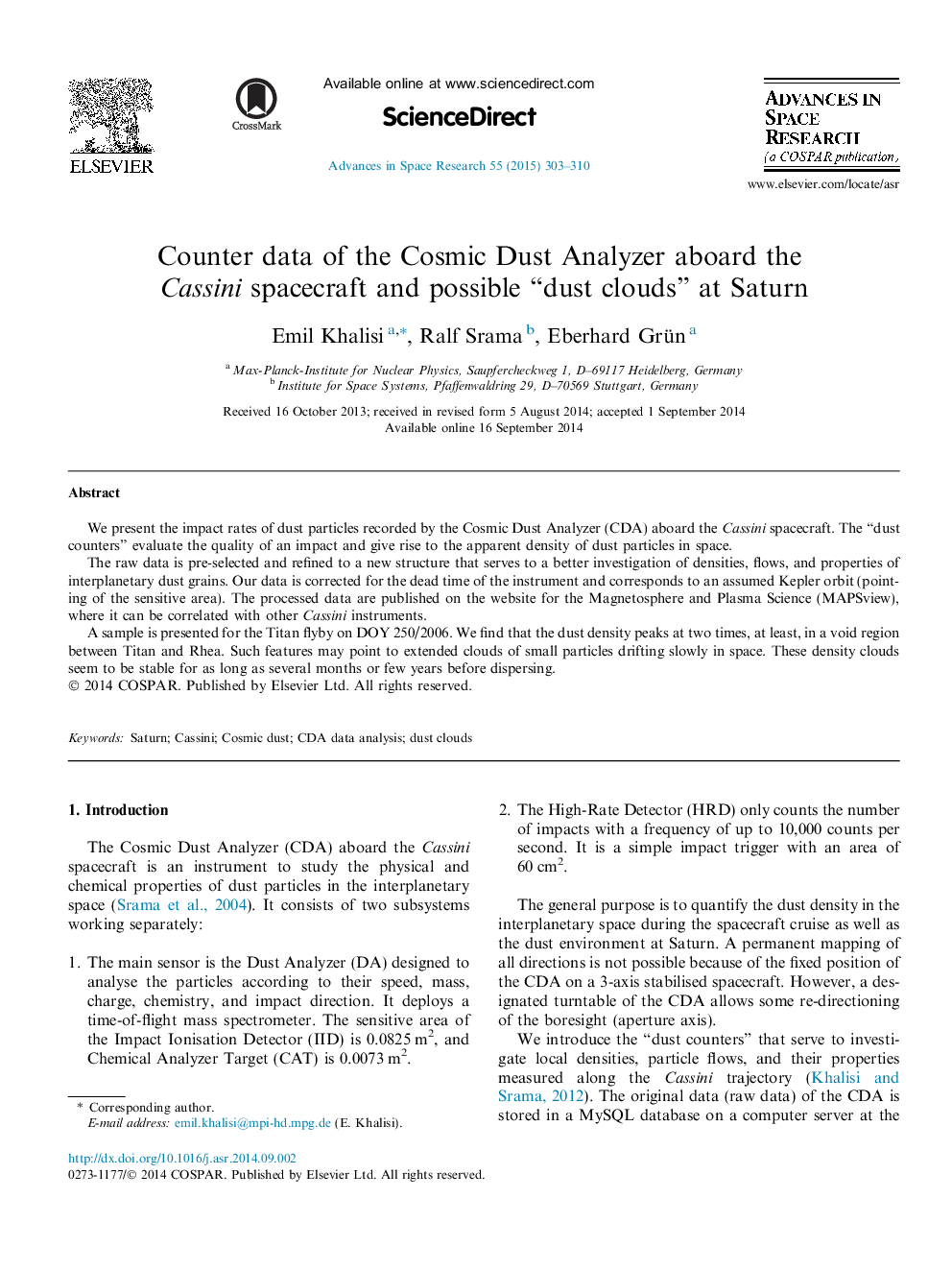| Article ID | Journal | Published Year | Pages | File Type |
|---|---|---|---|---|
| 1764133 | Advances in Space Research | 2015 | 8 Pages |
We present the impact rates of dust particles recorded by the Cosmic Dust Analyzer (CDA) aboard the Cassini spacecraft. The “dust counters” evaluate the quality of an impact and give rise to the apparent density of dust particles in space.The raw data is pre-selected and refined to a new structure that serves to a better investigation of densities, flows, and properties of interplanetary dust grains. Our data is corrected for the dead time of the instrument and corresponds to an assumed Kepler orbit (pointing of the sensitive area). The processed data are published on the website for the Magnetosphere and Plasma Science (MAPSview), where it can be correlated with other Cassini instruments.A sample is presented for the Titan flyby on DOY 250/2006. We find that the dust density peaks at two times, at least, in a void region between Titan and Rhea. Such features may point to extended clouds of small particles drifting slowly in space. These density clouds seem to be stable for as long as several months or few years before dispersing.
